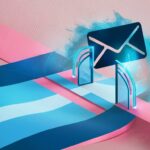If you’ve typed “clearskinstudy emails addresses” into Google, chances are, you’ve just received one of those mysterious skincare study invites in your inbox—and you’re not sure if you’re about to glow up or get scammed.
The short version? These emails are either:
- Inviting you to participate in a real skincare trial,
- Selling you a product under the disguise of science,
- Or part of a phishing or data collection campaign.
Let’s unpack what’s happening behind the curtain and how to stay safe while still chasing that clear skin dream.
What is clearskinstudy—and why are they emailing you?
“Clearskinstudy” sounds legit, like something out of a medical journal. The reality? The term often refers to unsolicited emails sent under the pretense of a dermatological study. These clearskinstudy emails addresses are typically structured to entice users with offers of free samples, product trials, cash compensation, or access to “exclusive” skin treatments.
Here’s the kicker: these campaigns may not represent any real scientific body. They’re often used as a front for lead generation, data harvesting, or affiliate marketing.
If you’re asking yourself “Why me?”—here’s the deal:
- Your email may have been pulled from a leaked list or sold via a marketing database.
- You might’ve signed up for something vaguely related, like a beauty newsletter or skincare giveaway, and got bundled into a third-party mailing list.
- Or the email could be part of a mass phishing campaign, targeting random users en masse.
Anatomy of a clearskinstudy email address: real or rogue?
So, how do you know which emails are genuinely from a clinical trial coordinator and which are dressed-up traps? Let’s break down the elements.
Anatomy of a suspicious clearskinstudy email:
- From: Something like
admin@clearskinstudyoffer.info - Subject line: “Apply now for the Clearskin Research Program – Limited Spots!”
- Copy: Vague about credentials, heavy on emotional appeal
- Links: Redirects to unfamiliar URLs, often ending in
.xyz,.top, or shady redirects - Action required: “Click here to confirm your eligibility” or “Claim your free trial now!”
Compare with a legitimate research email:
- From: A university or hospital domain (
@harvard.edu,@mountsinai.org) - Subject line: “Participant recruitment: Clinical Study on Acne Treatment”
- Copy: Specific details, clear explanation of process, opt-in forms with disclaimers
- Links: Go to verified institutional websites or national research registries
If it walks like spam and talks like spam… well, you know the rest.
Why clearskinstudy emails addresses are so common right now
We live in an era where:
- Consumers are hyper-focused on skincare and self-improvement
- Remote participation in research studies is rising
- Marketers are using “study” language to seem more trustworthy
Put it all together, and you’ve got the perfect storm for opportunists to send waves of clearskinstudy emails addresses in search of gullible clicks or harvested data.
Factors contributing to the rise:
- Increased remote trials post-pandemic
- Growing demand for skincare innovation (thanks, TikTok and YouTube hauls)
- Low regulation on email marketing globally
- Affiliate marketing that uses “study” as a hook to sell products
These emails play on both insecurity and curiosity, and frankly—they work. Unless you know what to look for.
How marketers abuse the “study” label
This is worth calling out: not all clearskinstudy emails addresses are created with malicious intent. Some are part of a funnel by skincare brands to drive sign-ups, sample requests, or soft sells.
But here’s the problem: they blur the line between marketing and research.
A common tactic looks like this:
- User clicks an ad or email with a “clinical study” offer.
- They land on a landing page offering a free product “in exchange for feedback.”
- In fine print? You’re enrolling in a subscription.
- The company now has your credit card, personal info, and mailing address.
All under the illusion that you were participating in a legit trial.
Real-life example: “Sophie” and the free serum trap
Let’s walk through a common story. Sophie (not her real name) got a clearskinstudy invite saying she could test a new acne serum developed in a “Swiss lab.” It looked professional. She filled out a form, paid $4.95 shipping, and waited.
What happened next?
- Her card was charged $79.95 two weeks later.
- The “serum” came in a generic bottle with no branding.
- Customer support didn’t respond.
- It turned out she’d agreed (in fine print) to a monthly subscription.
That’s why it pays to be cautious with any clearskinstudy emails addresses you don’t recognize.
What to do if you responded to one
Let’s say you clicked, filled out a form, maybe even paid for shipping. Now what?
Here’s your damage control checklist:
✅ Cancel your card or report the charge to your bank (if payment was made)
✅ Change your email password (especially if you reused it anywhere)
✅ Mark the sender as spam to block future outreach
✅ Run a quick check on your device for malware or tracking tools
✅ Report it to the FTC or local authorities if you feel scammed
Safe alternatives to clearskinstudy emails addresses
There are real skincare studies out there—ones that won’t steal your data or auto-bill your credit card.
Here’s where to look:
- ClinicalTrials.gov – Search “acne” or “skincare” to find legitimate open studies
- University research centers – Many schools run dermatology research
- Local hospitals and clinics – Check their clinical trials departments
- Apps like ResearchMatch or Antidote – Connect patients with real trials
These paths are less glamorous than the “You’ve Been Selected!” emails—but much safer.
Best practices: how to protect yourself from sketchy emails
Let’s build your inbox defense system. You don’t need to live in fear—just stay sharp.
Inbox safety checklist:
- Use alias email addresses when signing up for free samples or contests
- Install anti-phishing browser extensions like Bitdefender or Norton Safe Web
- Look up email domain history via tools like DomainTools or EmailRep
- Use 2FA (two-factor authentication) on your email
- Never give out credit card info for free trials without reading the terms
And remember—no real research center will ever require payment to join a clinical trial. Ever.
FAQ: clearskinstudy emails addresses
Are all clearskinstudy emails fake?
Not always. Some are marketing efforts disguised as studies. Others may be outright scams. It’s rare that they’re genuine research invitations.
Why do they keep emailing me?
You may be on a purchased marketing list or clicked on a previous ad that triggered ongoing outreach. Mark them as spam to limit future messages.
Can I report a suspicious clearskinstudy email?
Yes. Use Gmail’s “Report Phishing” option or forward the email to reportphishing@apwg.org.
Is it safe to unsubscribe?
Only unsubscribe if the email seems legitimate. If it’s clearly spammy or shady, don’t interact at all—just report and delete.
Conclusion: clearskinstudy emails addresses decoded
Now that we’ve peeled back the shiny promises and filtered out the noise, here’s the real takeaway: clearskinstudy emails addresses are often more sizzle than science.
They play on desire, urgency, and trust. But behind the curtain? You’re either being marketed to or misled.
If you’re serious about skincare research, go legit:
- Stick to verified clinical trials
- Be wary of freebies tied to vague promises
- Question the email source before engaging
Inbox clear. Skin clear. Mind clear. You’ve got this.




